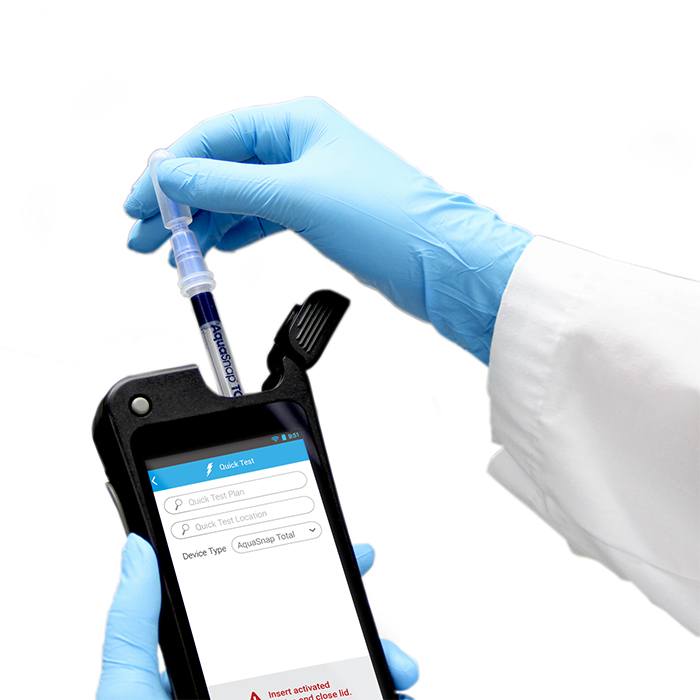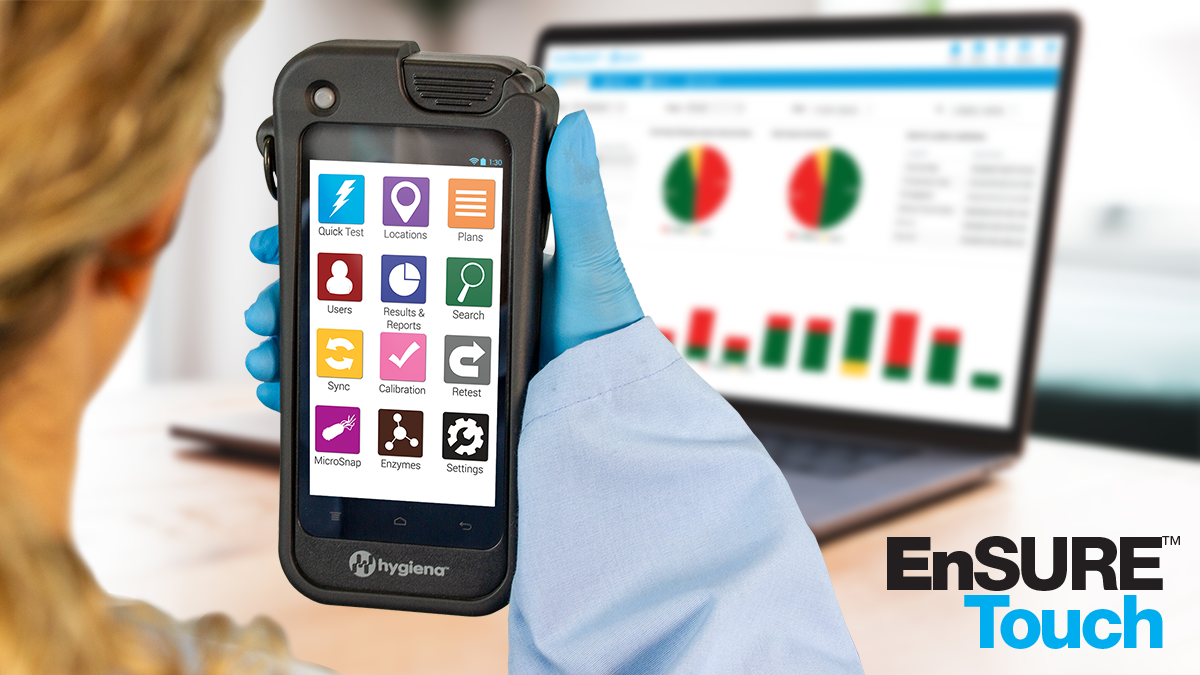ATP Testing for Food Handling Areas
May 2nd 2022

- What Is ATP Monitoring?
- Benefits of ATP Testing for Cleanliness
- When and Where to Swab for ATP
- What Kind of Bacteria Does an ATP Test Detect?
- How Is ATP Food Safety Measured?
- What Level of ATP Is Clean/Passing?
- How to Easily Measure ATP on Surfaces
- How Does ATP Testing Work?
- Try the EnSure Touch Luminometer
While you may clean, sanitize and disinfect your facility regularly, how do you know if it's actually clean? While you can perform a simple eye scan, bacteria and viruses can grow and replicate without your knowledge, and most contamination is not easily visible.
Adenosine triphosphate (ATP) tests are an ideal solution to improve cleanliness in food and beverage facilities. At QA Supplies, we carry a full line of sanitation products such as the EnSure Touch Luminometer to help facilities deliver outstanding quality control.
What Is ATP Monitoring?
ATP monitoring is a rapid testing method that quickly assesses the cleanliness of surfaces or liquids. All organic material contains ATP, the universal unit of energy in all living cells. ATP drives processes such as photosynthesis, muscle contraction in humans and animals and respiration in fungi, which means most foods contain some level of ATP.
Hygiena ATP testing devices use bioluminescence to detect residual ATP and indicate if a surface contains contamination such as food residue, allergens and bacteria. The presence of ATP also implies the surface may potentially be harboring and supporting the growth of bacteria.
ATP food safety monitoring confirms whether a food and beverage facility's sanitation procedures help reduce the presence of ATP. Using ATP monitoring can prevent cross-contamination to ensure product integrity and protect a brand's reputation.
Benefits of ATP Testing for Cleanliness
ATP sanitation testing is an efficient way to verify that a surface is clean because it can identify contaminants beyond visual inspections. Using an ATP test is a quick and easy way to confirm a company's cleaning procedures are working. An ATP test also detects the presence of food product residue, which is essential for cleanliness. If you do not remove food residue from the surface, it can leave behind nutrients, which help surviving contaminants like microorganisms multiply.
When and Where to Swab for ATP
Generally, a company should perform ATP food testing on high-contact spaces and hard-to-clean areas. A direct contact area is any surface where the presence of a contaminant will impact the final product. Conversely, indirect contact areas are any surface that can potentially splash, drop, drain or transfer onto the products. Some hard-to-clean areas include filler heads, nozzles and irregularly shaped surfaces such as corners and cracks.
To ensure your ATP test is effective, you should perform ATP testing after cleaning but before sanitization. Since sanitizers are not as effective when product residue is present, it is best to eliminate all ATP before sanitizing. If it is not possible to test between cleaning and sanitizing, it is acceptable to measure cleanliness after sanitizing.
What Kind of Bacteria Does an ATP Test Detect?
Since ATP is present in all living things, ATP sanitation testing can identify microbial dirt and bacteria and other potential hazards, such as:
- Food waste
- Fungal growth
- Bacteria microbes
- Biofilms
- Yeast
ATP testing systems cannot detect viruses because they contain RNA and DNA but not ATP. However, the absence of ATP does not indicate that all viruses are no longer present on the surface.
How Does ATP Test for Food Safety?
All ATP tests use a device called a luminometer to perform testing. Generally, you will swab a surface several times after completing your cleaning procedure. You will then place the swabs into your luminometer, which produces a result by reading the amount of light produced by the sample — or the relative light units (RLUs).
What Level of ATP Is Clean/Passing?
A higher RLU means there is more ATP present and the surface is dirtier. A lower RLU implies there is less ATP present and the area is clean. RLU pass/fail values will vary a lot depending on the market and different manufacturers seem to have different levels. Some food processing facilities aim to have a test score below 150 while others aim below 50. Ultimately, your company's ideal RLU score will depend on your facility's sanitation standards and risk tolerance.
How to Easily Measure ATP on Surfaces
The first step in measuring an area's cleanliness is to identify which surface requires testing. You will want to choose a surface in a high-touch area that may not receive attention during routine cleaning. After determining which location you would like to test:
- Turn on the luminometer and give it some time to calibrate.
- Remove an ATP test swab.
- Swab the surface area evenly. Apply enough pressure so the swab bends slightly but does not touch the shaft. Rotate the tip as you cover the surface. The entire swabbing time should take less than five seconds.
- Place the swab back into the tube.
- Break the bulb end between your thumb and forefinger.
- Squeeze the bulb two times before shaking it for five seconds.
- Put the tube back into the luminometer.
- Ensure the luminometer is upright before starting the measurement. You will have results within 15 seconds.
How Does ATP Testing Work?
Hygiena ATP testing devices contain a natural enzyme found in fireflies. This enzyme facilitates a simple light-producing reaction after coming into contact with ATP. By using this bioluminescence technology, luminometers can measure low levels of ATP.
Measuring the bioluminescence from an ATP reaction indicates surface cleanliness because the quantity of light generated is directly related to the amount of ATP in the sample. Since bioluminescent responses are immediate, companies can process results at the testing site in seconds.
Try the EnSure Touch Luminometer
If you are looking for outstanding quality control for your food and beverage facility, the EnSure Touch Luminometer is your solution. As a highly credible ATP testing device, the EnSure Touch Luminometer has undergone rigorous scrutiny to ensure it delivers accurate results. To improve your facility's cleanliness, explore our selection of sanitation products today.


